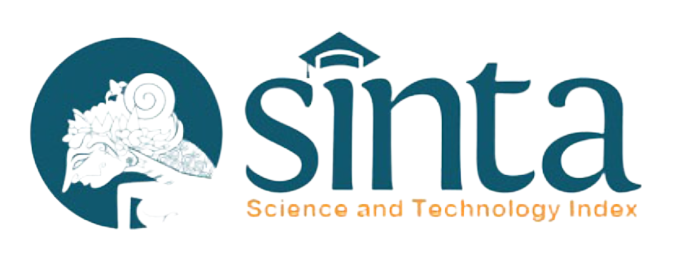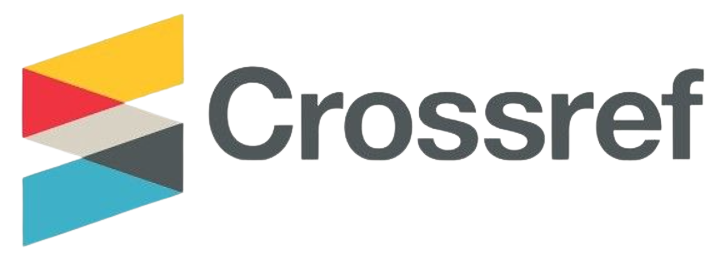Prediksi Mahasiswa Drop-Out Di Universitas XYZ
DOI:
https://doi.org/10.25126/jtiik.2024118689Abstrak
Akreditasi dan reputasi merupakan faktor krusial bagi setiap perguruan tinggi, termasuk Universitas XYZ. Salah satu hal yang dapat memengaruhi akreditasi adalah jumlah mahasiswa yang mengalami drop-out (DO). Untuk mencegah penurunan akreditasi dan reputasi akibat masalah tersebut, penelitian ini berfokus pada pengembangan model prediksi mahasiswa DO. Algoritma Random Forest, Gradient Boosting, dan Decision Tree digunakan untuk mengevaluasi seberapa akurat model klasifikasi dalam memprediksi potensi mahasiswa DO berdasarkan data akademik. Sebelum membangun model, digunakan metode SMOTE untuk menangani masalah ketidakseimbangan data. Hasil penelitian menunjukkan bahwa model prediksi menggunakan algoritma Random Forest berhasil mencapai akurasi sebesar 99,67%. Algoritma Gradient Boosting menghasilkan akurasi 99,21%, sementara Decision Tree mencapai akurasi sebesar 98,67%. Selain mengukur akurasi model, penelitian ini juga mengidentifikasi faktor-faktor utama yang berkontribusi terhadap prediksi mahasiswa DO. Faktor-faktor tersebut meliputi adanya tunggakan pembayaran, IPK rata-rata di bawah 2, jumlah mata kuliah yang diulang lebih dari satu kali, dan kegagalan dalam melakukan KRS lebih dari dua kali. Penelitian ini diharapkan dapat memberikan kontribusi signifikan dalam bidang prediksi akademik, khususnya dalam upaya mengurangi tingkat mahasiswa drop-out (DO) di perguruan tinggi.
Abstract
Accreditation and reputation are critical factors for higher education institutions, including XYZ University. One factor that can negatively impact accreditation is the number of students who drop out (DO). To prevent a decline in accreditation and reputation due to this issue, this study aims to develop a predictive model for student dropouts. The Random Forest, Gradient Boosting, and Decision Tree algorithms were utilized to evaluate the accuracy of classification models in predicting potential dropouts using academic baseline data. Prior to model building, the SMOTE method was applied to address the issue of imbalanced data. The results indicate that the predictive model using the Random Forest algorithm achieved an accuracy of 99.67%. The Gradient Boosting algorithm yielded an accuracy of 99.21%, while the Decision Tree algorithm achieved 98.67% accuracy. In addition to determining model accuracy, this study also identified key factors contributing to the prediction of student dropouts. These factors include outstanding payment history, a GPA below 2.0, repeating courses more than once, and failing to register for courses (KRS) more than twice. This research is expected to make a significant contribution to the field of academic prediction, particularly in efforts to reduce the dropout (DO) rate among university students.
Downloads
Referensi
HERRERA, F., CHAWLA, N. V, 2018. SMOTE for Learning from Imbalanced Data: Progress and Challenges, Marking the 15-year Anniversary. Journal of Artificial Intelligence Research, .
MUTROFIN, S., KHALIMI, A.M., KURNIAWAN, E., GINARDI, R.V.H., FATICHAH, C., SARI, Y.A., 2019. Detection of Potentially Students Drop Out of College in Case of Missing Value Using C4.5. In: 2019 International Conference on Sustainable Engineering and Creative Computing (ICSECC). pp.349–354. https://doi.org/10.1109/ICSECC.2019.8907014.
PEREZ, B., CASTELLANOS, C., CORREAL, D., 2018. Applying Data Mining Techniques to Predict Student Dropout: A Case Study. In: 2018 IEEE 1st Colombian Conference on Applications in Computational Intelligence (ColCACI). pp.1–6. https://doi.org/10.1109/ColCACI.2018.8484847.
PURNAMASARI, E., RINI, D.P., SUKEMI, 2019. Prediction of the Student Graduation’s Level using C4.5 Decision Tree Algorithm. In: 2019 International Conference on Electrical Engineering and Computer Science (ICECOS). pp.192–195. https://doi.org/10.1109/ICECOS47637.2019.8984493.
SAMUEL, Y.T., HUTAPEA, J.J., JONATHAN, B., 2019. Predicting the Timeliness of Student Graduation Using Decision Tree C4.5 Algorithm in Universitas Advent Indonesia. In: 2019 12th International Conference on Information & Communication Technology and System (ICTS). pp.276–280. https://doi.org/10.1109/ICTS.2019.885094.
SAUNDERS, M.N.K., LEWIS, P., THORNHILL, A., 2019. Research Methods for Business Students. Qualitative Market Research: An International Journal, https://doi.org/10.1108/qmr.2000.3.4.215.2.
SHALEV-SHWARTZ, S., BEN-DAVID, S. (2014). Understanding machine learning: From theory to algorithms. Cambridge university press.
SOLICHIN, A., 2019. Comparison of Decision Tree, Naïve Bayes and K-Nearest Neighbors for Predicting Thesis Graduation. In: 2019 6th International Conference on Electrical Engineering, Computer Science and Informatics (EECSI). pp.217–222. https://doi.org/10.23919/EECSI48112.2019.8977081.
SUTARMAN, SIRINGORINGO, R., ARISANDI, D., KURNIAWAN, E., NABABAN, E. B. (2024). Model Klasifikasi Dengan Logistic Regression Dan Recursive Feature Elimination Pada Data Tidak Seimbang. Jurnal Teknologi Informasi Dan Ilmu Komputer, 11(4), 735–742. https://doi.org/10.25126/jtiik.1148198
TENPIPAT, W., AKKARAJITSAKUL, K., 2020. Student Dropout Prediction: A KMUTT Case Study. In: 2020 1st International Conference on Big Data Analytics and Practices, IBDAP 2020. [online] Institute of Electrical and Electronics Engineers Inc. https://doi.org/10.1109/IBDAP50342.2020.9245457.
WANG, L., ZHANG, Z., ZHANG, X., ZHOU, X., WANG, P., ZHENG, Y. (2021). Chapter One - A Deep-forest based approach for detecting fraudulent online transaction. In A. R. Hurson & S. Wu (Eds.), AI and Cloud Computing (Vol. 120, pp. 1–38). Elsevier. https://doi.org/https://doi.org/10.1016/bs.adcom.2020.10.001
Unduhan
Diterbitkan
Terbitan
Bagian
Lisensi
Hak Cipta (c) 2024 Jurnal Teknologi Informasi dan Ilmu Komputer

Artikel ini berlisensiCreative Commons Attribution-ShareAlike 4.0 International License.

Artikel ini berlisensi Creative Common Attribution-ShareAlike 4.0 International (CC BY-SA 4.0)
Penulis yang menerbitkan di jurnal ini menyetujui ketentuan berikut:
- Penulis menyimpan hak cipta dan memberikan jurnal hak penerbitan pertama naskah secara simultan dengan lisensi di bawah Creative Common Attribution-ShareAlike 4.0 International (CC BY-SA 4.0) yang mengizinkan orang lain untuk berbagi pekerjaan dengan sebuah pernyataan kepenulisan pekerjaan dan penerbitan awal di jurnal ini.
- Penulis bisa memasukkan ke dalam penyusunan kontraktual tambahan terpisah untuk distribusi non ekslusif versi kaya terbitan jurnal (contoh: mempostingnya ke repositori institusional atau menerbitkannya dalam sebuah buku), dengan pengakuan penerbitan awalnya di jurnal ini.
- Penulis diizinkan dan didorong untuk mem-posting karya mereka online (contoh: di repositori institusional atau di website mereka) sebelum dan selama proses penyerahan, karena dapat mengarahkan ke pertukaran produktif, seperti halnya sitiran yang lebih awal dan lebih hebat dari karya yang diterbitkan. (Lihat Efek Akses Terbuka).














